Divination is an essential part of human history for centuries. It’s a practice of attempting to predict the future or discover hidden knowledge through various methods. From ancient times to the modern era, people have relied on different divination methods to gain insights into their lives and beyond.
In many cultures around the world, divination is a common part of their daily lives. There are many popular divination methods around the world, each with its own unique history and cultural significance.
Cultures & Different Types of Divination
For instance, the Chinese have a long history of divination practices such as I-Ching. In African cultures, divination is a part of rituals and ceremonies by spiritual leaders or priests. They use various tools like bones, shells, and animal parts to connect with the divine and gain insight into a situation or person. Native American tribes have their divination practices too. For example, the Navajo tribe uses sandpainting to connect with their deities and heal physical and emotional ailments.
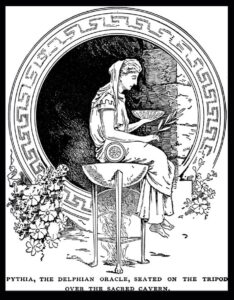
In ancient Greece, divination was a critical part of religious practice. The Oracle of Delphi was renowned for her prophecies. She delivers news from the future while in a trance-like state induced by inhaling fumes. The Romans had their divination practices as well. They were reading the entrails of sacrificed animals.
In medieval Europe, divination was associated with witchcraft. It wasn’t condemned by the church. Nevertheless, people still practiced divination using methods such as scrying. A crystal ball or mirror to receive visions of the future.
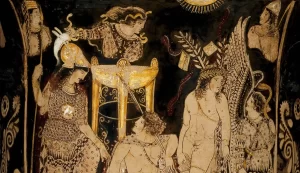
Today, divination methods are still popular around the world. Tarot reading, astrology, and palmistry are just a few examples of how people try to gain insight into their lives and the world around them. Let’s take the fortune-telling methods, which are still popular and frequently used today, to close marking.
Tarot Cards
Tarot card readers use a deck of 78 cards with various symbolic images. The origins of tarot cards date back to the 15th century when they were first used as playing cards in Italy. People did not begin using tarot cards for divination purposes until the late 18th century. A.E. Waite and Pamela Colman Smith created the Rider-Waite-Smith tarot deck. It is currently the most popular tarot deck used today, in 1909.
Tarot cards are used as a tool for divination and self-discovery. Their popularity has grown over time. Those who seek spiritual guidance and insight into their lives commonly use tarot card readings today. Tarot readers interpret the symbolic images on the cards to provide insights and guidance to the person receiving the reading. Despite being widely used, some people view tarot card reading as a controversial practice lacking scientific proof. They consider it a form of fortune-telling.
Palmistry
Palmistry, also known as chiromancy, is a form of divination that involves analyzing the lines, mounts, and overall shape of a person’s hands to reveal insights about their personality, fate, and future. This ancient practice dates back thousands of years, with its origins tracing to ancient India, where it was deeply intertwined with Hindu astrology and Vedic traditions. From India, palmistry spread to China, Tibet, Persia, and Egypt, eventually reaching ancient Greece, where philosophers like Aristotle and Hippocrates studied it as a means of understanding both physical and mental health. The practice later flourished in medieval Europe, where it was often linked to both mysticism and early psychology.
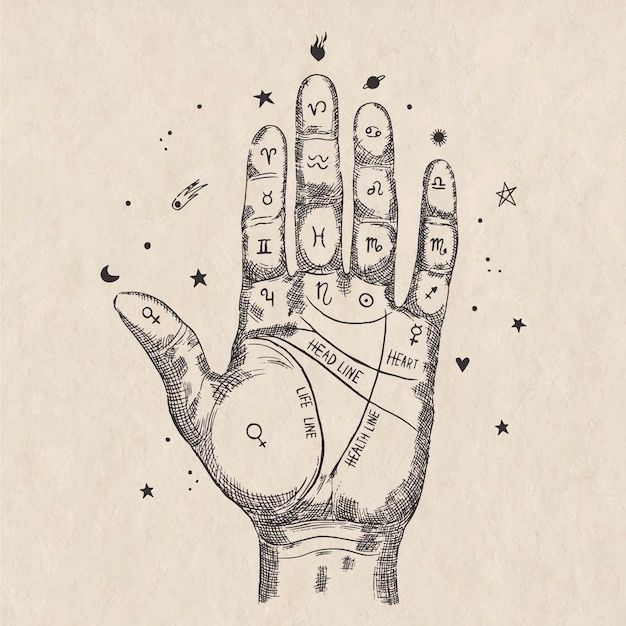
Palmists examine three major lines—the heart line, head line, and life line—along with minor lines such as the fate line, sun line, and intuition line, each carrying symbolic significance. Additionally, they assess the mounts (raised areas of the palm), which are associated with different planetary influences, such as the Mount of Venus (love and passion) or the Mount of Jupiter (leadership and ambition). Beyond the lines, palmists also consider the size, shape, and flexibility of the hands, fingers, and nails, as these features provide deeper insights into a person’s temperament and life path.
Palmistry has long been used not only as a tool for fortune-telling, but also for self-discovery, self-improvement, and spiritual growth. In modern times, it continues to captivate those seeking guidance in all kinds of matters, offering an intuitive blend of ancient wisdom and psychological insight.
Astrology
Astrology is a system of beliefs and practices that involves the study of celestial bodies. It is all about stars and planets, and their supposed influence on human affairs and the natural world. It has a long and complex history, dating back to ancient times. Times when people used the positions of the stars and planets to track time and predict changes in the seasons. Over time, astrology evolved to become a complex system of divination. A way to gain insights into human personality, relationships, and future events.
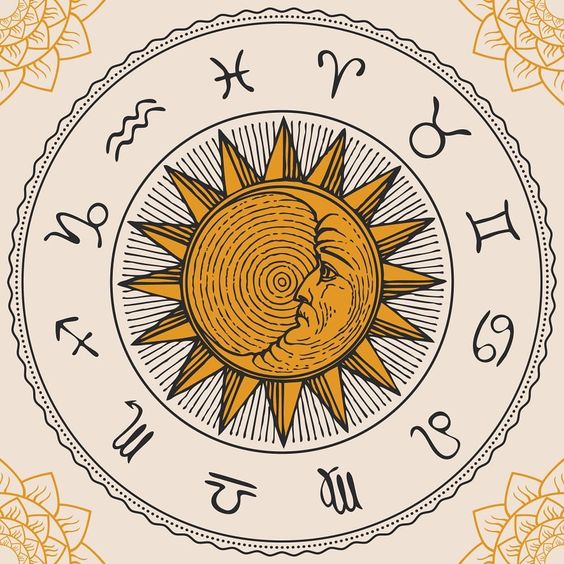
In ancient civilizations such as Babylon, Egypt, and Greece, astrology was highly respected. It was an important field of study, and astrologers were consulted by kings and rulers to help them make important decisions. Today, astrology remains a popular form of divination. Millions of people around the world consult astrologers, read horoscopes, and use astrology to gain insights into their lives and the world around them.
Runes
The Nordic people, particularly the Vikings and Germanic tribes, used rune stones as a powerful form of divination and magic. These ancient symbols, known as Runes, date back to at least the 2nd century CE and were part of the Elder Futhark, the oldest runic alphabet consisting of 24 characters. The angular shapes of the runes were intentionally designed to be carved easily into wood, bone, or stone, ensuring their use in amulets, inscriptions, and magical rituals.
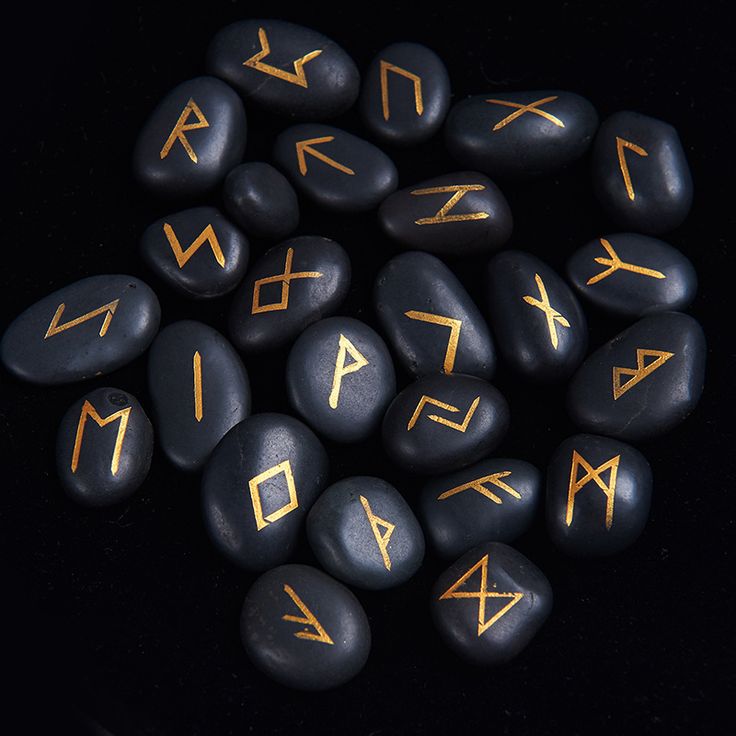
Each rune was believed to hold mystical power and was associated with specific meanings, deities, and cosmic forces. The god Odin, the Allfather of Norse mythology, was said to have discovered the runes after hanging from Yggdrasil, the World Tree, for nine nights, sacrificing himself to gain divine wisdom. This myth underscored the deep spiritual and magical significance of runes.
For divination, runes were cast onto a cloth or drawn one by one from a bag, and their position, orientation, and relation to other runes determined their interpretation. Some runes had reversed (merkstave) meanings, introducing additional layers of symbolism, much like tarot card reversals. This form of divination, called runecasting, was often used to seek guidance on fate, protection, and personal challenges.
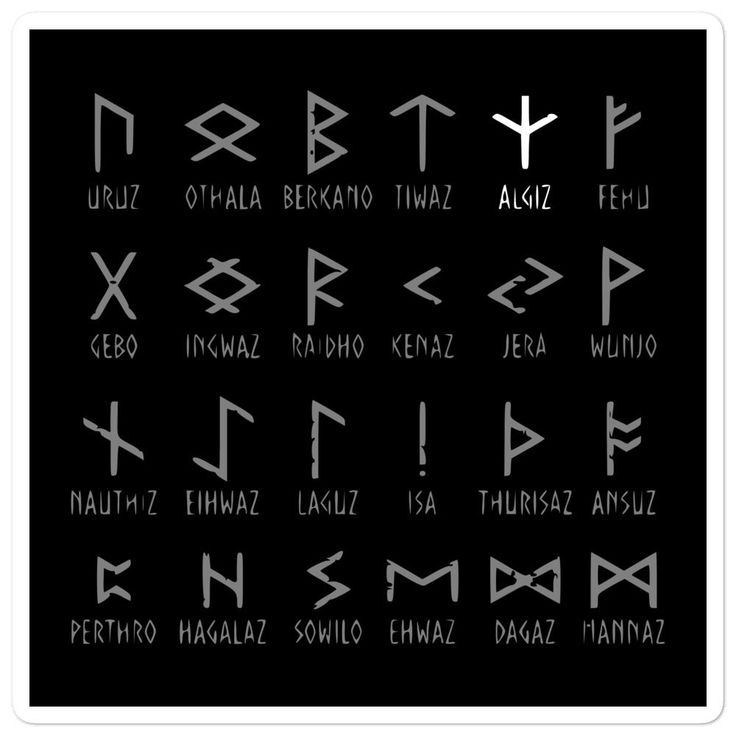
Beyond divination, runes were used in rituals and ceremonies for protection, healing, and blessings. Warriors engraved runes on their weapons for strength, while others inscribed them on talismans for good fortune and warding off evil spirits. The Nordic people often combined runic readings with other forms of divination, such as observing the flight patterns of birds (ornithomancy) or interpreting natural omens like cloud shapes and the movement of the sea.
I-Ching
For thousands of years, people have turned to I-Ching, also known as the Book of Changes, as a powerful tool for divination and self-reflection. Originating in ancient China over 3,000 years ago, the I-Ching is one of the oldest known systems of divination, deeply rooted in Taoist and Confucian philosophy. Traditionally attributed to the legendary Emperor Fu Xi, its development was later expanded by King Wen of Zhou and Confucius, who refined its interpretations.
The I-Ching is based on a system of 64 hexagrams, each composed of six lines that can be either broken (yin, passive, receptive) or unbroken (yang, active, creative). These hexagrams symbolize the fundamental principles of balance, duality, and change that govern the universe. Practitioners generate a hexagram by casting yarrow stalks or three coins, producing a series of numbers that correspond to specific lines. The resulting hexagram is then analyzed in combination with accompanying texts to reveal guidance on the situation at hand.
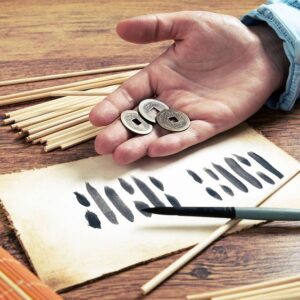
More than just a fortune-telling tool, the I-Ching serves as a philosophical guide, emphasizing that everything in life is in a state of constant transformation. It is frequently consulted for insights on relationships, career decisions, health, and spiritual growth. The text has also been a cornerstone in Chinese metaphysics, influencing disciplines like feng shui, traditional Chinese medicine, and martial arts.
Scrying
Scrying, one of the most ancient and mystical forms of divination, involves gazing into a reflective or translucent surface to gain insight into the past, present, or future. The word scry comes from the Old English descry, meaning “to reveal” or “to make out dimly.” This practice has roots stretching back thousands of years, appearing in the traditions of ancient Egypt, Greece, China, and Mesoamerican cultures. The most well-known historical reference is perhaps the famed seer Nostradamus, who allegedly used a bowl of water to receive his prophetic visions.
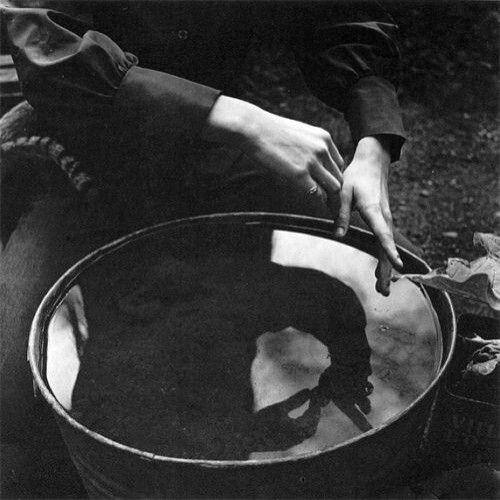
Throughout history, different cultures have adapted scrying to their own spiritual beliefs and tools. The Celts used blackened water contained in sacred cauldrons, while medieval European occultists preferred crystal balls—an image popularized by Romani fortune tellers and later the mysticism of the Renaissance. In Mesoamerica, polished obsidian mirrors were employed by Aztec shamans for divine communication, with the famous artifact of the god Tezcatlipoca, the “Smoking Mirror,” serving as a testament to its significance. Similarly, the ancient Chinese practice of water gazing was used in Taoist divination.

The process of scrying is typically performed in a quiet, dimly lit environment to facilitate focus and receptivity. Common mediums include water, fire, mirrors, crystal balls, and even smoke. Candles, incense, or ritualistic chants are sometimes used to heighten the connection between the practitioner and the unseen. As the mind enters a meditative state, practitioners may begin to see images, symbols, colors, or shifting shapes within their chosen medium. These visions are highly personal and require interpretation, often relying on intuition, spiritual guidance, or symbolic associations.
Numerology
Numerology is an ancient divination system that interprets the mystical significance of numbers and their influence on human life. Rooted in the belief that numbers carry specific vibrations and energies, numerology has been used for centuries to gain insight into personality traits, life paths, and potential future outcomes. This practice is based on the idea that numbers are more than mere mathematical symbols—they hold a deeper, cosmic meaning that can reveal hidden truths about the universe and our place within it.
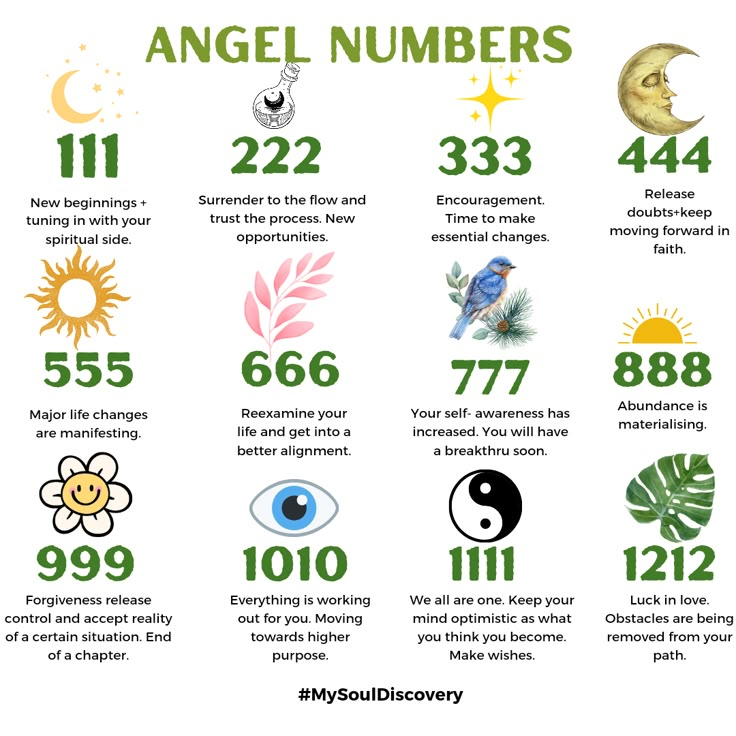
The origins of numerology can be traced back to various ancient civilizations, including the Babylonians, Egyptians, Chinese, and Greeks, each of whom recognized the spiritual significance of numbers. However, one of the most well-known historical figures associated with numerology is the Greek philosopher and mathematician Pythagoras (c. 570–495 BCE). Pythagoras believed that numbers were the fundamental building blocks of the universe and that everything in existence could be understood through numerical relationships. His teachings laid the foundation for what is now known as Pythagorean numerology, which remains one of the most commonly used numerological systems today.
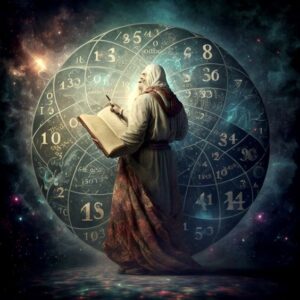
In numerology, practitioners assign numerical values to letters in a person’s name and calculate the significance of their birth date. These values are then added together and reduced to a single-digit or master number (such as 11, 22, or 33), which is interpreted to provide insight into an individual’s personality, strengths, challenges, and life purpose. The most important number in a person’s numerological chart is the Life Path Number, which is derived from their birth date and represents their core essence and journey through life. Other key numbers, such as the Destiny Number, Soul Urge Number, and Expression Number, offer additional layers of meaning and self-understanding.
Tasseomancy
In tea leaf reading or teomancy, practitioners interpret patterns that are formed by loose tea leaves in a cup or bowl. This ancient practice has roots in multiple cultures, including China, India, the Middle East, and Europe, each contributing to its evolution over the centuries. Some scholars believe its origins can be traced back to ancient China, where tea drinking was deeply intertwined with spiritual and meditative practices. Others link it to medieval Europe, where fortune-tellers adapted the art after the introduction of tea from the East in the 17th century. The Romani people also played a significant role in spreading and refining the practice across Europe.
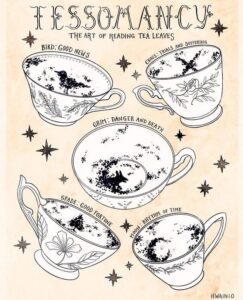
The process of tasseomancy typically begins with brewing a cup of loose-leaf tea. The seeker, focusing on a question or situation, drinks the tea, leaving only the dregs behind. The cup is then swirled to distribute the leaves along its sides before being overturned onto a saucer. The reader carefully examines the remaining tea leaves, interpreting the shapes, symbols, and their positions in the cup. Certain shapes—such as hearts for love, birds for messages, or serpents for deception—carry symbolic meanings, much like dream interpretation or other divinatory systems. The placement of the leaves is also crucial; symbols near the rim may indicate imminent events, while those at the bottom may suggest distant or hidden influences.
Pendulum
Pendulum divination, also known as dowsing or radiesthesia, is a technique that has been used for centuries to seek guidance and answers from the unseen. It involves a weight—often a crystal, metal, or wooden pendulum—suspended from a chain or string, which swings in response to yes-or-no questions. The practitioner holds the pendulum steady, allowing its subtle movements to provide insight, believed to be influenced by the user’s subconscious mind or universal energy.
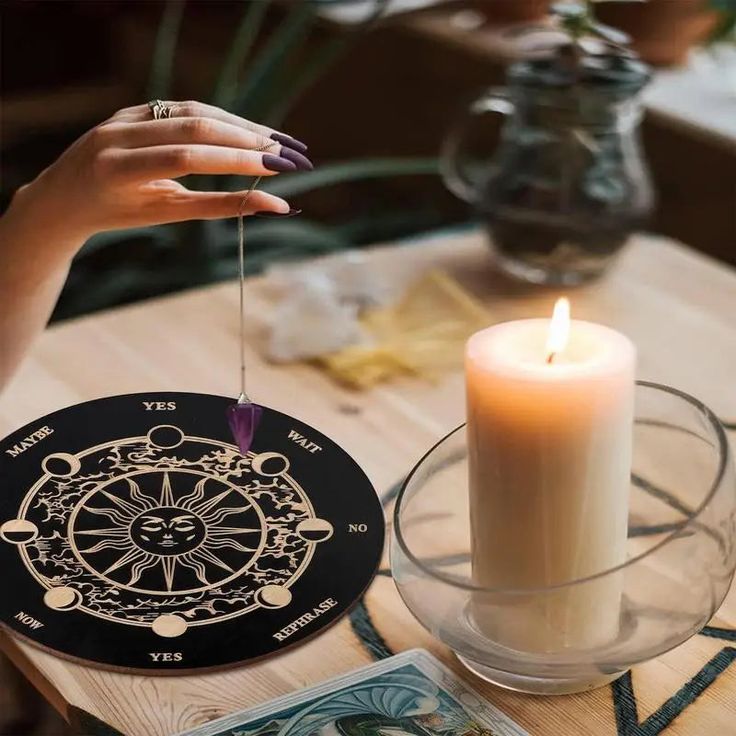
The origins of Pendulum divination trace back to ancient civilizations. The practice was notably used by the Egyptians, Chinese, and Romans, who believed in the pendulum’s ability to reveal hidden truths. Some accounts suggest that pendulums were employed by early dowsers to locate underground water sources, a practice that evolved into spiritual and mystical uses over time. During the Middle Ages, pendulums were often associated with sorcery and hidden knowledge, while in the 17th and 18th centuries, European diviners popularized them for answering life’s uncertainties.
Pendulum movements—swinging back and forth, side to side, or in circular motions—are interpreted based on pre-established meanings set by the user. Some believe that the pendulum acts as a bridge between the conscious and subconscious mind, unlocking intuition and inner wisdom. Others see it as a way to connect with higher spiritual forces, spirit guides, or the energies of the universe.
Despite its mystical allure, pendulum divination is met with skepticism, as scientific studies attribute its motion to the ideomotor effect—subtle, unconscious muscle movements made by the user.
Turkish Coffee or ‘Fal’
Turkish coffee fortune telling, known as fal in Turkish, is an ancient practice that traces its roots back to the Ottoman Empire and has spread throughout the Middle East, the Balkans, and even parts of Europe. This method of divination is deeply embedded in Turkish culture, blending mysticism with social tradition. The practice is believed to have originated as early as the 16th century, when coffee became a central part of daily life in the Ottoman courts and coffeehouses (kahvehane) flourished as hubs of conversation, politics, and fortune-telling.
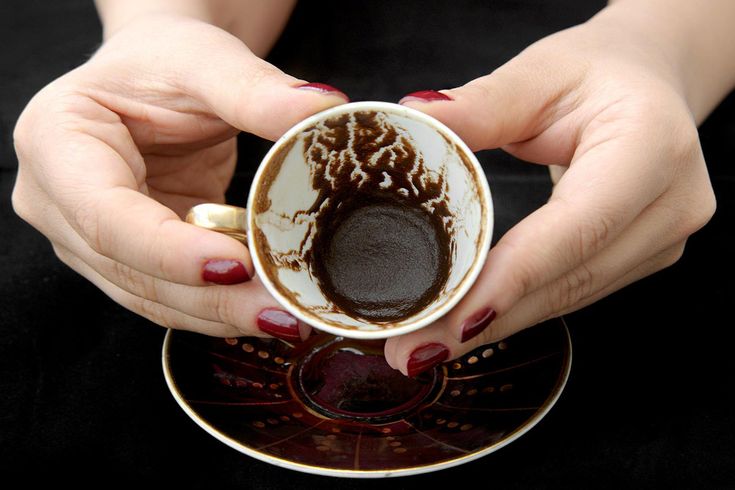
The process begins with the preparation of Turkish coffee, a method that involves brewing finely ground coffee with water and sugar (if desired) in a small pot called a cezve. Unlike filtered coffee, Turkish coffee remains unfiltered, allowing the thick grounds to settle at the bottom of the cup. Once the coffee is consumed, leaving a small amount of sediment, the person seeking their fortune places the saucer on top of the cup and flips it upside down. This action allows the grounds to flow and form unique patterns on the cup’s interior as they cool. Some people gently swirl the cup before flipping it to create more intricate patterns, and it is also customary to place a gold or silver ring on top to speed up the cooling process—a tradition believed to enhance the clarity of the symbols.
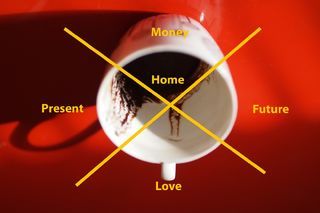
When the cup has cooled, the reading begins. A skilled fortune teller, known as a falcı, or the individual themselves, if they possess the gift, interprets the shapes, lines, and symbols left by the coffee grounds. Each pattern holds symbolic meaning: a bird may signify good news, a key could represent new opportunities, and wavy lines might indicate emotional turbulence. The saucer is also read—if excess liquid has pooled on it, this may suggest an unresolved emotional issue or unexpected news.
Beyond its divinatory aspect, Turkish coffee fortune telling is a cherished social ritual. Friends often gather over coffee, exchanging fortunes and playful predictions in an intimate and lighthearted atmosphere.
References:
“Divination” – Encyclopedia Britannica
“Methods of Divination” – Wikipedia
“The History of Divination Practices” – The College of Psychic Studies
“The Art of Divination in the Ancient Near East” – Baylor University Press
“Divination and Interpretation of Signs in the Ancient World” – The Oriental Institute of the University of Chicago
“Divination: Oracles & Omens” – Bodleian Libraries
“Tarot: Origins & Afterlives” – The Warburg Institute

